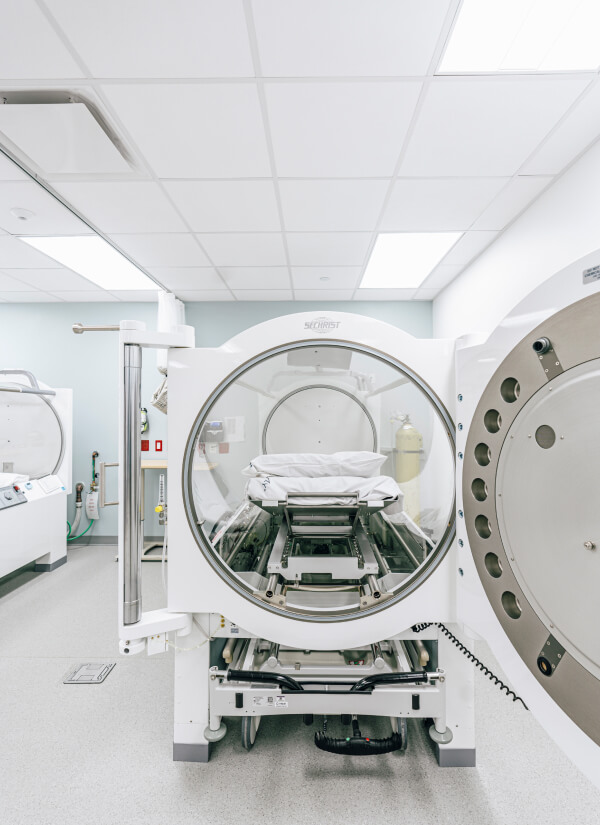CMS-Approved and Reimbursable Indications for HBOT
The following list details the current Centers for Medicare & Medicaid Services (CMS)-approved and reimbursable indications for hyperbaric oxygen therapy (HBOT). Hyperbaric therapy is covered as adjunctive therapy.
Acute carbon monoxide intoxication
Gas embolism
Gas gangrene
Actinomycosis, only as an adjunct outcome to conventional therapy when the disease process is refractory to antibiotics and surgical treatment
Diabetic wounds of the lower extremities in patients who meet the following criteria: a) Patient has type I or type II diabetes and has a lower extremity wound that is due to diabetes; b) Patient has a wound classified as Wagner grade III or higher; and c) Patient has failed an adequate course of standard wound therapy
Cyanide poisoning
Progressive necrotizing infections (necrotizing fascitis)
Acute peripheral arterial insufficiency
Preparation and preservation of compromised skin grafts (not for primary management of wounds)
Acute traumatic peripheral ischemia. HBOT is a valuable treatment to be used in combination with accepted standard therapeutic measures when loss of function, limb or life is threatened.
Decompression Illness
Chronic refractory osteomyelitis, unresponsive to conventional treatment
Osteoradionecrosis as an adjunct to conventional treatment
Soft tissue radionecrosis as an adjunct to conventional treatment
Crush injuries and suturing of severed limbs. As in the previous conditions and outcomes, HBOT would be an adjunctive treatment when loss of function, limb or life is threatened.

For diabetic patients with a Wagner Grade 3 or higher wound, who have not shown significant improvement after 30 days of standard wound care, it would be appropriate to initiate hyperbaric oxygen therapy to reduce the risk of major amputation. Standard wound care that occurs before starting HBOT includes:
Assessment of a patient’s vascular status and correction of any vascular problems in the affected limb if possible
Optimal nutrition–optimization and status of nutrition
Optimization of glucose control, including dietary glucose sources
Debridement by any means to remove devitalized tissue
Maintenance of a clean, moist bed of granulation tissue with appropriate moist dressings
Appropriate offloading
Necessary treatment to resolve any infection that might be present
Removal and culture of tissue and cells for medical treatment
Failure to respond to standard wound care occurs when there are no measurable signs of healing for at least 30 consecutive days. Wounds must be evaluated at least every 30 days during HBOT. Below are the 15 CMS and most third-party payors approved and reimbursement indications for HBOT outcomes.

Learn how a CutisCare partnership can help you deliver cost-effective
and essential wound care in your community.
Your Patients Will Thank You











